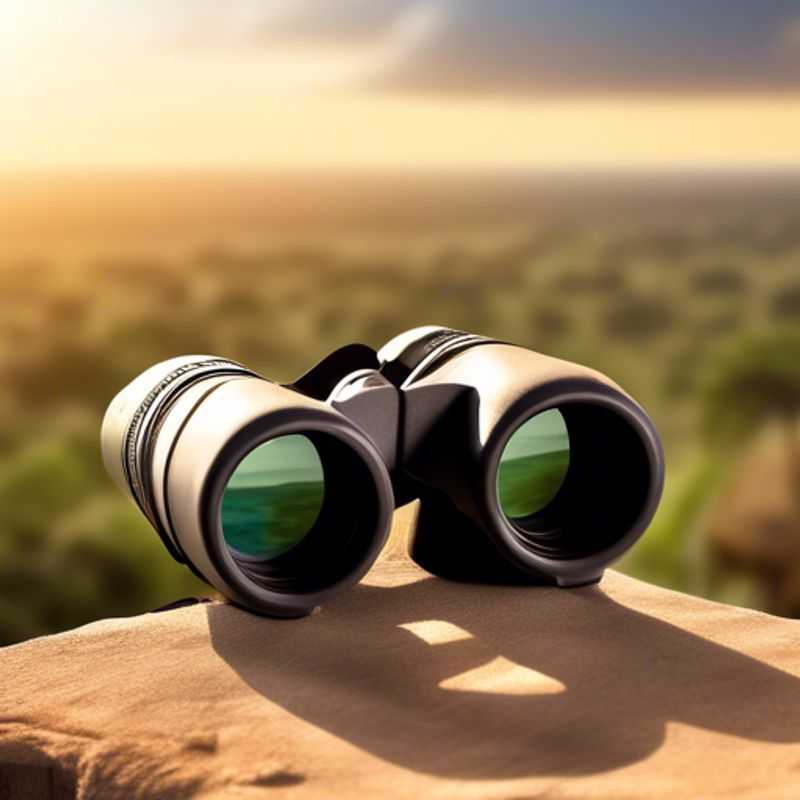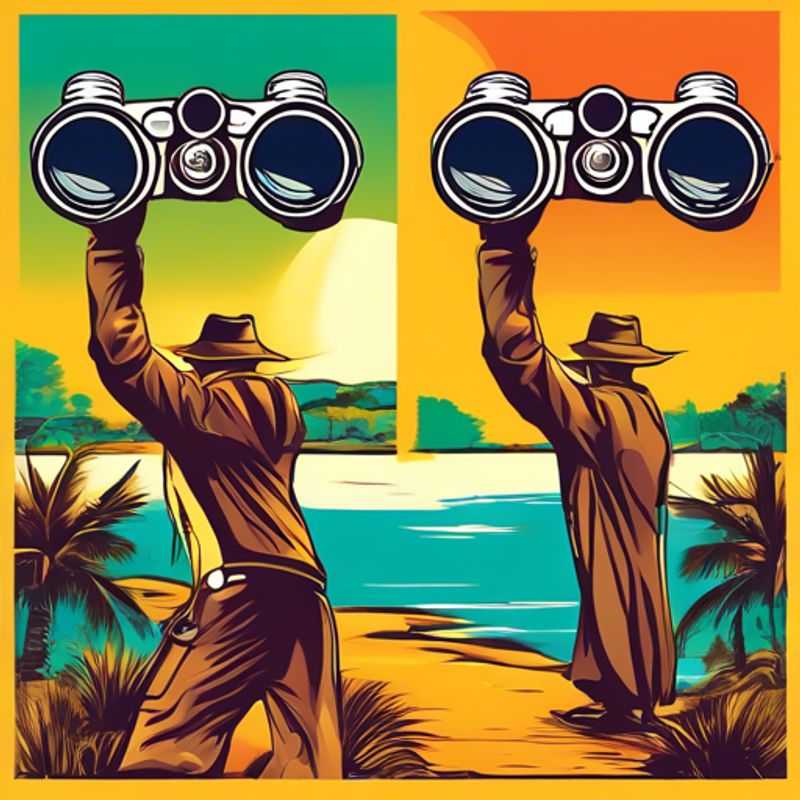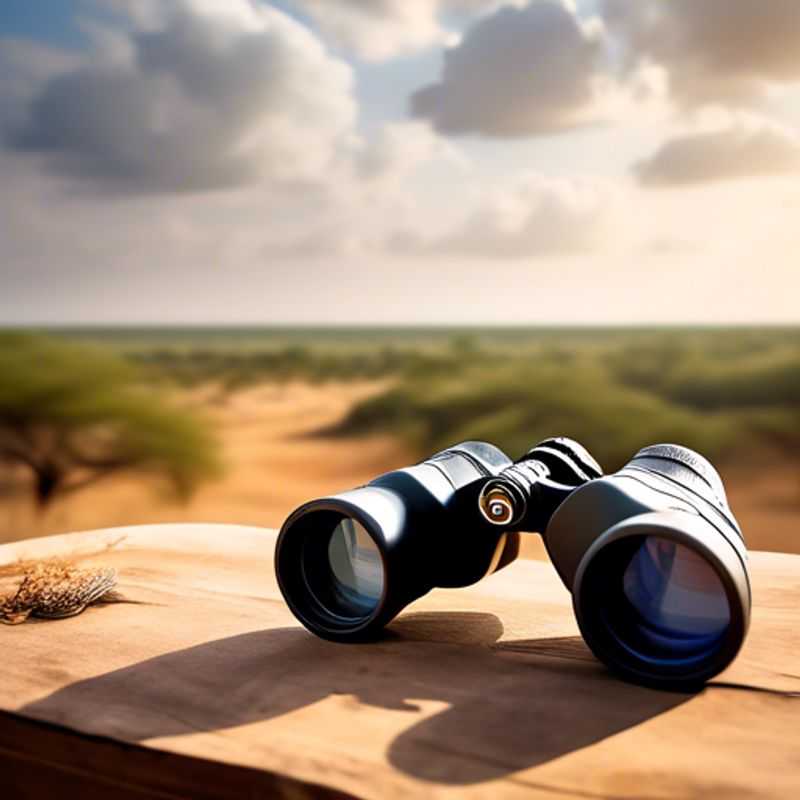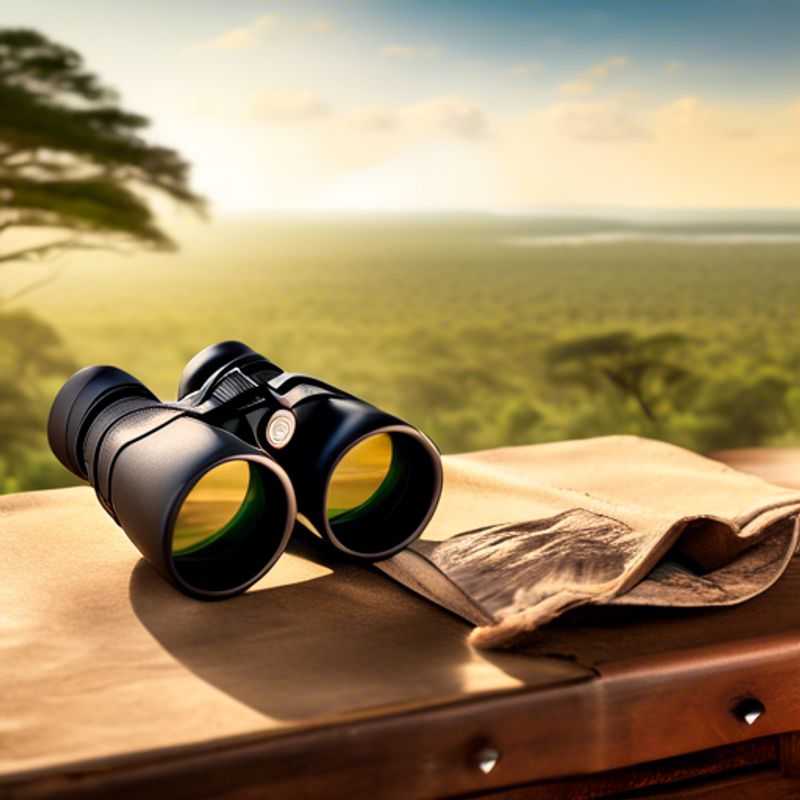7 Tips to Know Before Purchasing Binoculars (for Safaris): A Safari-Savvy Guide

Safari Savvy: 7 Binocular Buying Tips for the Ultimate Wildlife Viewing Experience
Ah, binoculars. Those trusty companions on any thrilling safari adventure! But before you embark on your wildlife-spotting odyssey, you need to equip yourself with the right pair. You wouldn’t go on a quest to find the legendary El Dorado without a map, right? So, grab your safari hat, grab your notepad, and let’s dive into the fascinating world of binocular selection!
Tip #1: Know Your Prey!Determine the intended use and magnification power needed. Are you hoping to spot the elusive African leopard in the dense bush, or are you planning on observing birds in flight? The magnification power dictates how much closer an object appears, with higher numbers offering more zoom, but potentially making them heavier and less steady.
Before purchasing Safari Binoculars
- Determine the intended use and magnification power needed. Are you primarily focused on observing wildlife at a distance, or do you need a more versatile tool for birdwatching and general observation?

Magnifying Your Vision: How to Choose the Right Magnification Power for Your Needs
Determining the intended use and magnification power needed for a magnifying glass is crucial for effective usage. The intended use dictates the level of magnification required, with higher magnification suitable for intricate tasks like inspecting small details, while lower magnification is better for larger objects. The magnification power, usually denoted by a number like 2x, 3x, or 5x, represents how much larger an object appears through the lens. A 2x magnification means the object appears twice its actual size. It's important to note that magnification power varies with the distance between the object and the lens.
Here's a simple guide to choosing the right magnification:
For general tasks like reading small print or examining stamps, a 2x to 3x magnification is usually sufficient.
For more detailed work, such as examining insects, coins, or jewelry, 5x to 10x magnification is recommended.
For highly specialized tasks like scientific research or microelectronics, magnifications exceeding 10x are commonly employed.
When choosing a magnifying glass, also consider the lens size, material, and ergonomic features. Larger lenses provide a wider field of view, while high-quality glass lenses offer better clarity and sharpness.

Lens Size Matters: Why Objective Diameter is Key to Great Photos
Ever wondered why some binoculars or telescopes cost a fortune? It all boils down to the objective lens diameter, a critical factor in light-gathering capabilities. This essentially determines how much light your optics can capture, directly impacting your viewing experience, especially in low-light conditions.
Think of it like this: a larger lens acts as a bigger "bucket" for catching photons. More photons mean brighter and clearer images, particularly useful for stargazing or birdwatching in twilight. However, a larger objective lens also translates to bigger and heavier optics, potentially impacting portability and cost.
So, how do you choose the right lens diameter? It depends on your specific needs. For casual birdwatching, a 40mm lens might be sufficient. But for serious stargazing or wildlife photography, you'd want to invest in a 70mm or even larger lens. Remember, the larger the objective lens diameter, the greater the price tag.
In short, the objective lens diameter is a critical factor in optical performance. Consider your intended use and budget, and remember, bigger is usually better when it comes to light-gathering, but also heavier and more expensive. Happy stargazing!

See Clearly: Why Multi-Coated Lenses Are a Must-Have
Ever wondered why some photos have that annoying glare or hazy look, while others are crisp and clear? It's all about the lens, my friend! Multi-coated lenses are like a superhero's secret weapon for tackling those pesky reflections and glare. They're coated with multiple layers of special materials that help control light passing through the lens. Think of it like wearing sunglasses for your camera – they cut down on those unwanted reflections, allowing more light to pass through and giving you a clearer, sharper image. So, next time you're shopping for a camera, be sure to look for multi-coated lenses to take your photography game to the next level!

Choosing Durable and Weather-Resistant Construction: A Guide for the Ages
Durability and weather resistance are key considerations when constructing anything. These factors directly impact the lifespan and performance of your project, whether it’s a deck, a shed, or a house. Choosing the right materials and techniques ensures your structure stands strong against the elements and time.
Materials play a huge role in determining durability. Wood, a classic choice, is often treated with preservatives to combat rot and decay. Concrete offers exceptional strength and can withstand harsh weather. Metal, like steel or aluminum, provides a durable and often lightweight option, though corrosion can be a factor.
Weather resistance goes beyond just the material. Proper construction techniques are essential. This includes using waterproof membranes, proper flashing, and ventilation to prevent moisture buildup. Regularly maintaining your structure also plays a crucial role in preventing wear and tear.
Remember, durability and weather resistance aren't free. These features come with an increased initial cost compared to less robust options. However, the long-term benefits, such as reduced maintenance and a longer lifespan, often outweigh the initial investment.
When planning your project, consider the local climate. A structure in a humid environment requires different considerations than one in a desert. Consult with a qualified contractor who understands your needs and can recommend the best materials and techniques for your specific location.

Wide Field of View: Your Secret Weapon for Tracking Subjects
When it comes to tracking subjects, prioritizing a widely expanded field of view is crucial for effective observation. A wider field of view allows you to monitor multiple subjects simultaneously, reducing the need for constant adjustments and enhancing situational awareness. This is particularly important in activities such as wildlife observation, sports photography, and surveillance.
To achieve a wide field of view, consider using equipment such as binoculars with a higher objective lens diameter or cameras with a wide-angle lens. These tools typically range in cost from $100 to $2000 depending on the brand and specifications. Additionally, investing in software that provides panoramic viewing capabilities can further enhance your tracking efficiency, with prices varying based on features.
Remember, choosing the right equipment is just part of the equation. You should also practice proper positioning and stabilization techniques to maintain a clear view without losing focus on your subjects. Ultimately, a strategic approach combined with the right tools will significantly improve your ability to track and analyze movements effectively.

Binocular Bliss: Comfort is Key to a Great View
Binoculars should feel comfortable in your hands, especially if you plan to use them for extended periods. Here’s how to ensure your binoculars are comfortable to hold:
Grip: Look for binoculars with a textured or rubberized grip, offering a secure hold even with sweaty hands. Consider binoculars with adjustable eye cups, allowing you to customize the fit to your face and eye relief, reducing strain. Some models also have a strap attachment point, which can be helpful for long-term use or observation while moving.
Weight and Balance: The weight distribution of binoculars is crucial for comfort. Well-balanced binoculars feel natural in your hands and minimize hand fatigue. You can test this by holding the binoculars in front of you and gently shifting your grip. If it feels balanced, then it should be comfortable to hold.
Size and Adjustability: Consider the size and adjustability of your binoculars. Smaller binoculars might feel more comfortable for smaller hands, while larger ones offer greater magnification. Some binoculars have adjustable interpupillary distance (IPD), allowing you to tailor the spacing between the eyepieces to your eye width, enhancing comfort and clarity.
Don't hesitate to visit a local store and test out different binoculars to find the one that feels most comfortable in your hands. Remember, a comfortable grip is essential for a positive viewing experience!

Don't Be Fooled by a Pretty Face: How to Research Reputable Brands and Read Expert Reviews
Researching reputable brands and reading expert reviews is crucial for making informed purchasing decisions, especially when dealing with expensive or complex products. This is where you can truly save money in the long run by avoiding costly mistakes. You can delve into a product's history, quality control measures, and overall reputation. This can be a time-consuming process, but the information can be invaluable.
Start by examining the brand's history. How long has the company been in business? Are they known for a particular product category? Look for information about their manufacturing processes, material sourcing, and customer service. A quick search on the internet can provide you with a wealth of information.
Next, consult expert reviews. Websites dedicated to product testing, consumer reports, and industry publications offer unbiased insights. They often put products through rigorous testing, evaluating performance, durability, and features. Remember, different reviewers may have different priorities, so pay attention to their expertise and approach.
Here are some resources to consider: Consumer Reports, Wirecutter, The Verge, CNET, PCMag, and various publications specific to your product category. Additionally, you can find user reviews on sites like Amazon, Best Buy, and other online retailers. It's important to recognize that user reviews can be subjective and biased. While they can provide anecdotal evidence, they shouldn't be the sole basis for your decision.
In conclusion, combining your research on brand reputation with expert reviews from reputable sources will equip you with a comprehensive understanding of the products you're considering. This empowers you to make a confident and informed purchase.
